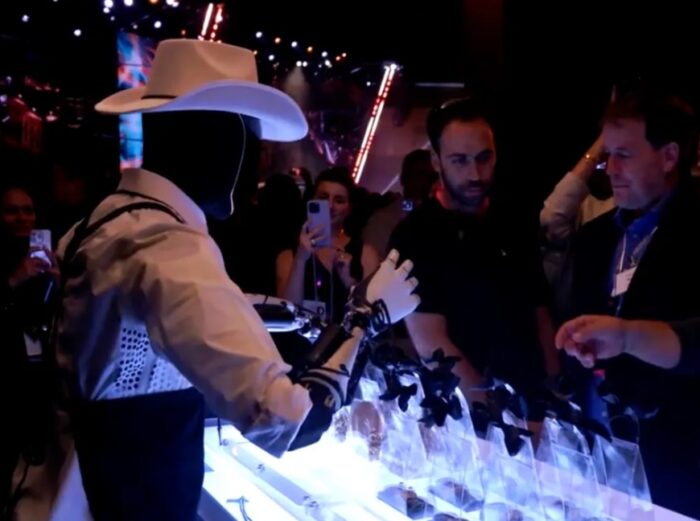Oct 21 2024
Tesla Demonstrated its Optimus Robot
 At a recent event Tesla showcased the capabilities of its humanoid autonomous robot, Optimus. The demonstration has come under some criticism, however, for not being fully transparent about the nature of the demonstration. We interviewed robotics expert, Christian Hubicki, on the SGU this week to discuss the details. Here are some of the points I found most interesting.
At a recent event Tesla showcased the capabilities of its humanoid autonomous robot, Optimus. The demonstration has come under some criticism, however, for not being fully transparent about the nature of the demonstration. We interviewed robotics expert, Christian Hubicki, on the SGU this week to discuss the details. Here are some of the points I found most interesting.
First, let’s deal with the controversy – to what extent were the robots autonomous, and how transparent was this to the crowd? The first question is easier to answer. There are basically three types of robot control, pre-programmed, autonomous, and teleoperated. Pre-programmed means they are following a predetermined set of instructions. Often if you see a robot dancing, for example, that is a pre-programmed routine. Autonomous means the robot has internal real-time control. Teleoperated means that a human in a motion-capture suit is controlling the movement of the robots. All three of these types of control have their utility.
These are humanoid robots, and they were able to walk on their own. Robot walking has to be autonomous or pre-programmed, it cannot be teleoperated. This is because balance requires real-time feedback of position and other information to produces the moment-to-moment adjustments that maintain balance. A tele-operator would not have this (at least not with current technology). The Optimus robots walked out, so this was autonomous.
Once in position, however, the robots began serving and interacting with the humans present. Christian noted that he and other roboticists were able to immediately tell that the upper body movements of the robots were teleoperated, just by the way they were moving. Also, the verbal interaction also seemed teleoperated as each robot had a difference voice and the responses were immediate and included gesticulations.
Some might say – so what? The engineering of the robots themselves is impressive. They can autonomously walk, and not of them fell over or did anything weird. This much is a fairly impressive demonstration. It is actually quite dangerous to have fully autonomous robots interacting with people. The technology is not quite there yet. Robots are heavy and powerful, and just falling over might cause human injury. Reliability has to be extremely high before we will be comfortable putting fully autonomous robots in human spaces. Making robots lighter and softer is one solution, because they they were be less physically dangerous.
But the question for the Optimus demonstration is – how transparent was the teleoperation of the robots? Tesla, apparently, did not explicitly say the robots were being operated fully autonomously, nor did any of the robot operator lie when directly asked. But at the same time, the teleoperators were not in view, and Tesla did not go out of their way to transparently point out that they were being teleoperated. How big a deal is this? That is a matter of perception.
But Christian pointed out that there is a very specific question at the heart of the demonstration – where is Tesla compared to its competitors in terms of autonomous control? The demonstration, if you did not know there were teleoperators, makes the Optimus seem years ahead of where it really is. It made it seem as if Tesla is ahead of their competition when in fact they may not be.
While Tesla was operating in a bit of a transparency grey-zone, I think the pushback is healthy for the industry. The fact is that robotics demonstrations typically use various methods of making the robots seem more impressive than they are – speeding up videos, hiding teleoperation, only showing successes and not the failures, and glossing over significant limitations. This is OK if you are Disney and your intent is to create an entertaining illusion. This is not OK if you are a robotics company demonstrating the capabilities of your product.
What is happening as a result of push back and exposure of lack of total transparency is an increasing use of transparency in robotic videos. This, in my opinion, should become standard, and anything less unacceptable. Videos, for example, can be labeled as “autonomous” or “teleoperated” and also can be labeled if they are being shown in a speed other than 1x. Here is a follow up video from Tesla where they do just that. However, this video is in a controlled environment, we don’t know how many “takes” were required, and the Optimus demonstrates only some of what it did at the event. At live events, if there are teleoperators, they should not be hidden in any way.
This controversy aside, the Optimus is quite impressive just from a hardware point of view. But the real question is – what will be the market and the use of these robots? The application will depend partly on the safety and reliability, and therefore on its autonomous capabilities. Tesla wants their robots to be all-purpose. This is an extremely high bar, and requires significant advances in autonomous control. This is why people are very particular about how transparent Tesla is being about where their autonomous technology is.






